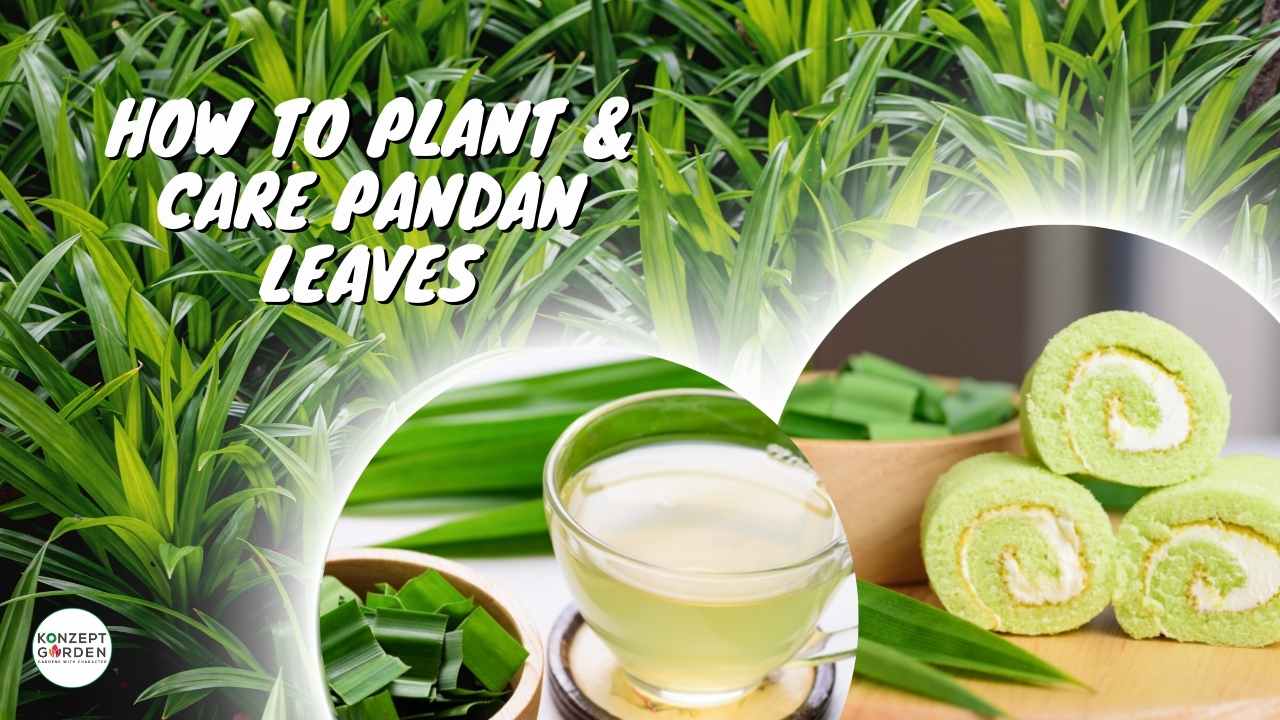
How to plant and care for Pandan Leaves?
Yes, we know you're wondering why the admin is writing about Pandan Leaves. Well, we have been to many houses to install our product – but we have not seen many garden-planting Pandan Leaves.
The pandan plant, also known as pandanus or screwpine, is a tropical iconic plant native to Southeast Asia and Australasia. It is commonly used in the region for cooking and fragrance, due to its fragrant leaves that emit a strong aroma when cut or crushed.
Our moms love to plant this – and why not us?

What is Pandan Plant?
In some countries such as Malaysia and Thailand, pandan plants are often planted near homes for their pleasing scent. The pandan plant can reach heights of up to 10 feet and has long narrow leaves with sharp edges.
Interestingly, it reproduces primarily through its lateral roots rather than seeds. As a result, pandan plants are usually propagated through vegetative means by planting small offshoots known as suckers.
Though primarily grown for culinary purposes, pandan plants have also recently gained popularity as ornamental gardening plants due to their unique appearance and pleasant scent.
How to plant pandan plant in Malaysia?
Planting a pandan plant in Malaysia is fairly straightforward. First, find a location with well-drained soil and partial shade. Dig a hole that is slightly larger than the pot your pandan plant is in and gently remove it from its container.
Place the plant in the hole and fill in any gaps with soil, lightly pressing down to compact it around the roots. Once planted, water thoroughly and regularly for the first few weeks until the plant becomes established.
It's also important to fertilize monthly during its growing season to ensure strong growth and healthy leaves. With proper care, your pandan plant will thrive in its new home and provide a stunning addition to your garden.
How to take care of the pandan plant?
To properly care for a pandan plant, it is important to provide the right amount of sunlight and water. Place the plant in an area with indirect light and water thoroughly, allowing the soil to dry out between watering sessions.
Pandan plants do not require much fertilizer, so only use a small amount every few months. Prune regularly to maintain the plant's shape and promote new growth. If the leaves start turning yellow or brown, check for any signs of pests and treat them accordingly.
With proper care, a pandan plant can thrive and provide additional beauty to any indoor or outdoor space.
What are the benefits of pandan plant
The pandan plant, also known as the screwpine, is native to Southeast Asia and is prized for its fragrant leaves. In addition to its culinary uses (such as flavoring foods and infusing beverages), the pandan plant offers a variety of benefits.
The roots of the plant can be used in traditional medicine to treat stomach discomfort and inflammation. The oil extracted from pandan leaves has been demonstrated to have antimicrobial properties, making it useful in cleansing and skincare products.
Pandan leaves can also be woven into mats, baskets, and other handicrafts. Furthermore, the pandan plant can serve as an effective natural insect repellent when burned or placed in small sachets in closets and drawers.
Overall, the pandan plant is a versatile and valuable addition to any garden.
Some recipes that use pandan leaves
If you've never cooked with pandan leaves before, it's time to give them a try. These long green leaves have a fragrant, sweet flavor that pairs well with desserts and drinks. One classic dish is a pandan layer cake, often found in Southeast Asian bakeries.
The leaves are blended into the batter for a subtly floral taste and bright green color. Another beloved dessert is pandan custard, which can be eaten as is or used as a filling for pastries like bao buns or coconut rolls.
And don't forget about drinks – adding pandan leaves to hot milk creates a delicious and soothing drink, perfect for chilly nights. Give these ideas a try and experiment with incorporating pandan leaves into your cooking repertoire.
Click here for a recipe that uses Pandan Leaves: TEPUNG PELITA

The process of growing and taking care of pandan plants is actually not as difficult as it might seem. If you have basic gardening knowledge, you should be able to grow your own pandan plant without too much trouble.
And even if you don't have a green thumb, scroll back up to this article and you will find how to plant them. Plus, the benefits of having a pandan plant are numerous. Not only do they make your home look more lush and vibrant, but they also provide a host of health benefits.
So what are you waiting for? Give it a try this weekend and see how it goes!
Sincerely,
Konzept Garden Team






 Login
Login
